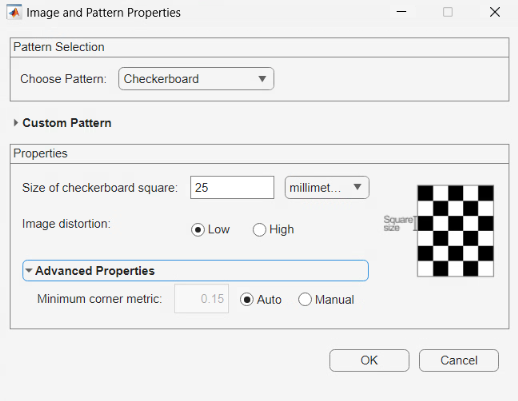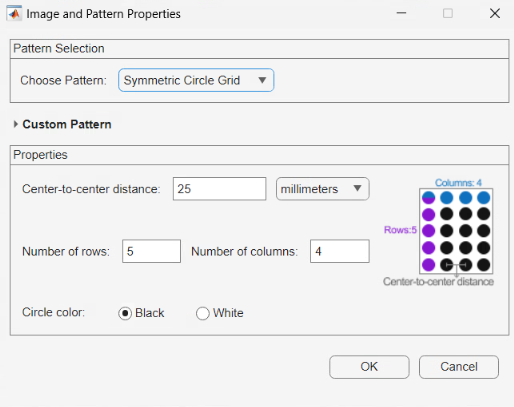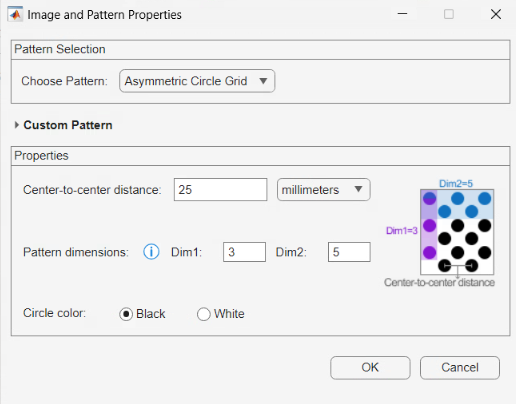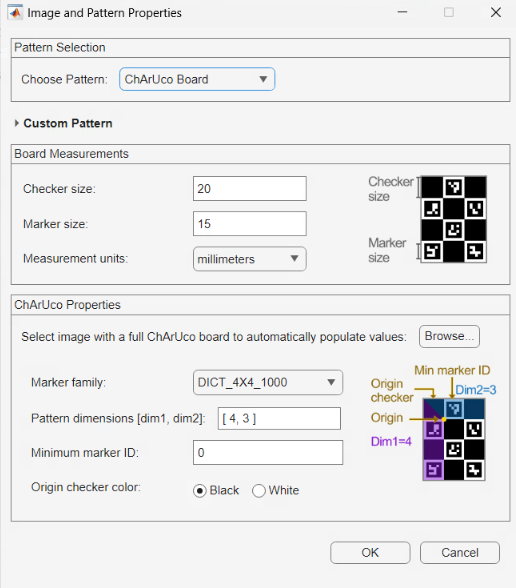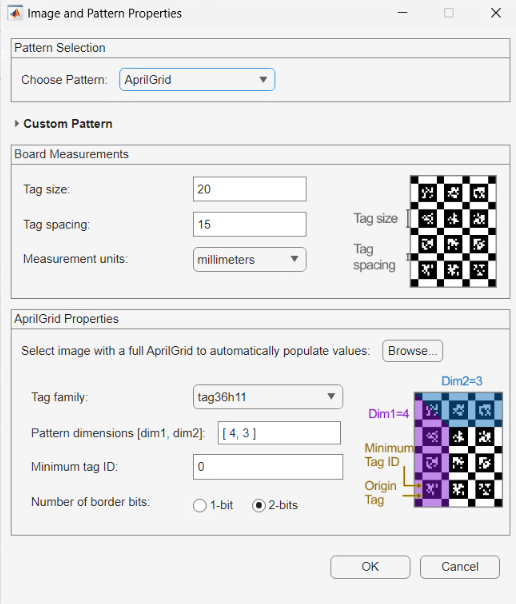Select Calibration Pattern and Set Properties
After selecting the images you want to use, the Camera Calibrator app displays an Image and Pattern Properties dialog box, or the Stereo Camera Calibrator app displays a Load Stereo Images dialog box. In the Pattern Selection section, select the type of pattern to use for the calibration. The drop-down lists the natively supported patterns and any previously created custom patterns. Alternatively, you can create a custom pattern by using a template. For more details, see Custom Pattern Detector.
You must provide calibration pattern properties related to the size and dimension of the pattern structure. For checkerboard patterns, specify the square size. All of the calibration patterns are supported in the Camera Calibrator and Stereo Camera Calibrator apps, with the exception of the symmetric grid circle, that is only supported by the single camera calibrator. The table lists the properties in the app dialog boxes to set for each of the calibration patterns. For more details about calibration patterns, see Calibration Patterns.
| Pattern | Properties | Example |
|---|---|---|
Checkerboard |
|
|
Symmetric Circle Grid |
|
|
Asymmetric Circle Grid |
|
|
ChArUco board |
|
|
AprilGrid |
|
|
